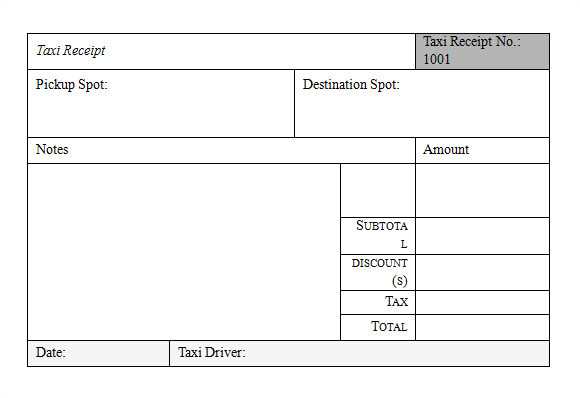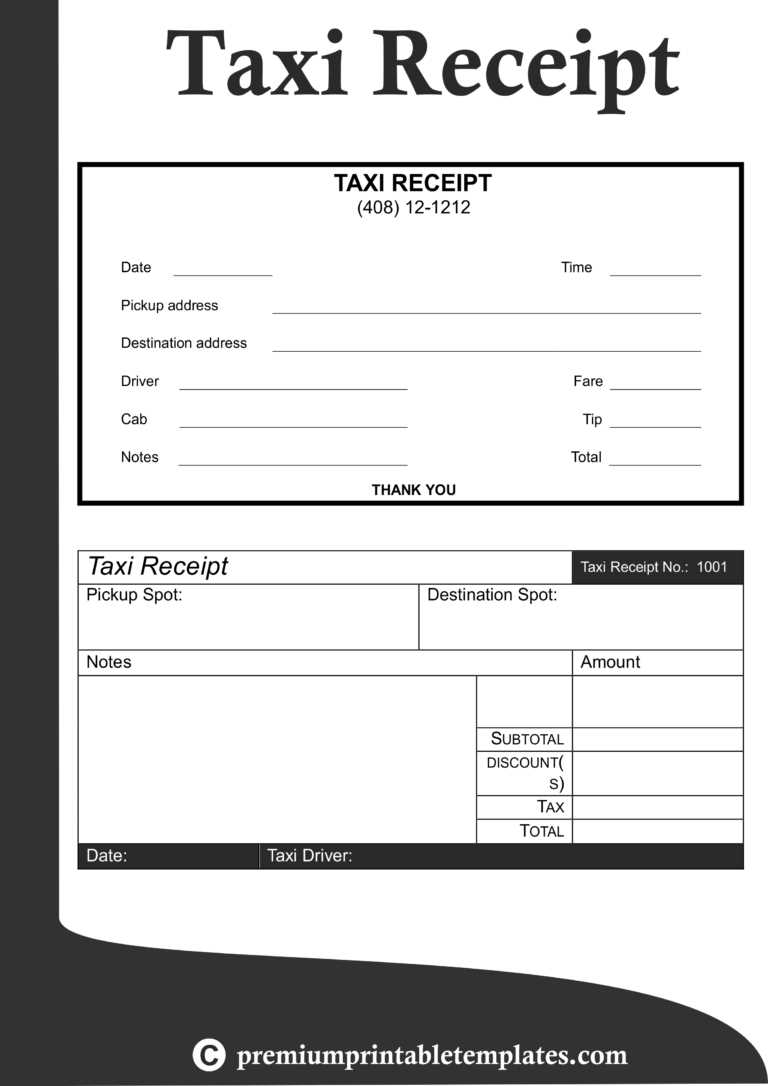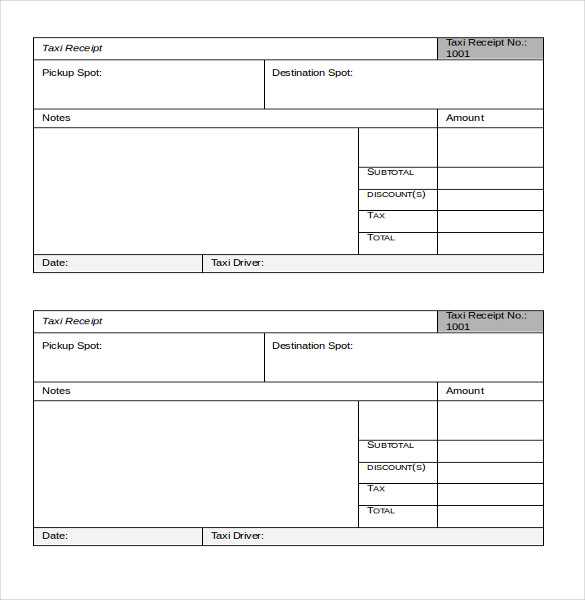
Using a transportation receipt template helps streamline the process of documenting travel expenses. Customize it to match the specific details of each transaction, including travel method, route, and cost breakdown.
Include the Date and Time: Make sure to record the exact date and time of transportation. This will provide clarity for both the payer and the recipient.
Detail the Service Provider: Specify the name of the transportation company or the individual providing the service. This helps confirm the authenticity of the receipt.
Clearly State the Amount: List the total cost of the service, ensuring all fees and taxes are included. If applicable, break down the charges into smaller components for transparency.
Additional Information: If necessary, include extra details like payment method or ticket number. This will give both parties the full picture of the transaction.
Transportation Receipt Template
Use this template to create a clear and concise transportation receipt. Ensure all details are accurate and easy to understand for both the service provider and recipient.
The header should display the company name, address, and contact information. Directly under the header, list the receipt number and the date of the transaction.
Include the following details about the service: type of transportation, number of items or packages, the origin and destination addresses, and any special notes related to the service. Specify the total cost and any applicable taxes. Break down the price into components, such as base charge, fuel fees, or extra services if applicable.
For transparency, provide a clear payment method section, including whether the payment was made in cash, by card, or through another method. Indicate whether the amount was paid upfront or is due at delivery.
Conclude with a section for both the sender and receiver’s signatures to confirm the agreement. This adds accountability and a formal touch to the transaction.
Key Components to Include in a Template
Include the following details in your transportation receipt template:
Sender and Recipient Information: Clearly state the names, addresses, and contact details of both the sender and the recipient. This helps in identifying the parties involved and ensures proper delivery.
Transportation Details: Include the type of transport used, such as truck, plane, or ship, along with the specific transportation method (e.g., ground, air, sea). Note any relevant tracking numbers or service identifiers.
Shipment Description: Describe the items being transported. Include the weight, dimensions, and nature of the goods (perishable, fragile, etc.) to avoid any confusion or mishandling during transit.
Dates and Times: Clearly specify the date and time of shipment initiation and expected delivery. This allows both parties to track progress and plan accordingly.
Cost Breakdown: List the cost of transportation, including any additional fees, taxes, or surcharges. Provide a breakdown for transparency and reference.
Terms and Conditions: Briefly outline any relevant terms, such as delivery policies, insurance, or liability clauses. This ensures both parties are aware of their responsibilities.
Signature Line: Leave space for the signatures of both parties involved. This confirms acceptance and completion of the transaction.
How to Customize for Specific Transportation Types

To tailor a transportation receipt template, first determine the type of transportation. Different methods, such as road, air, or sea, each require specific details.
For Road Transportation
- Include vehicle type (e.g., truck, van, motorcycle) and license plate number.
- Specify the cargo type (e.g., goods, livestock) and the weight or volume.
- Provide driver information, including name and contact details.
- List route details and expected delivery time for clarity.
For Air Transportation

- Record flight number, airline, and departure and arrival airports.
- Ensure passenger or cargo details are included, such as seat or container number.
- List any customs or security information that may be relevant.
For Sea Transportation
- Include vessel name, port of departure, and port of arrival.
- Provide container or cargo identification numbers.
- Note any specific shipping terms (e.g., Incoterms) or handling instructions.
Adjust the template based on the transportation method, adding or removing details as necessary to match the requirements of each type.
Legal Considerations and Compliance Requirements

Ensure your transportation receipt template adheres to the legal requirements of your region. Different jurisdictions have specific regulations regarding the inclusion of key details like service descriptions, dates, and payment terms. For example, some areas may mandate that receipts include both the name of the transporter and the recipient, alongside other essential transaction data.
Make sure to include accurate tax information, if applicable. The receipt should reflect any sales or service taxes collected as part of the transportation service. Many tax authorities require precise documentation of such transactions to ensure compliance with local tax laws.
If your service crosses borders, keep in mind that international shipping often brings additional legal obligations. Different countries may require specific statements or disclosures related to customs, tariffs, and applicable laws governing cross-border transactions. Failure to meet these requirements can result in fines or complications in clearing goods through customs.
It’s also crucial to respect privacy laws in your region. Ensure that personal data collected for transportation purposes is handled securely and in compliance with regulations like GDPR in Europe or CCPA in California. Be transparent about how this data will be used and stored.
Consult legal professionals to review your receipt template regularly and verify that it remains up-to-date with any changes to the law. This ensures your operations stay compliant and avoids any potential legal risks.


